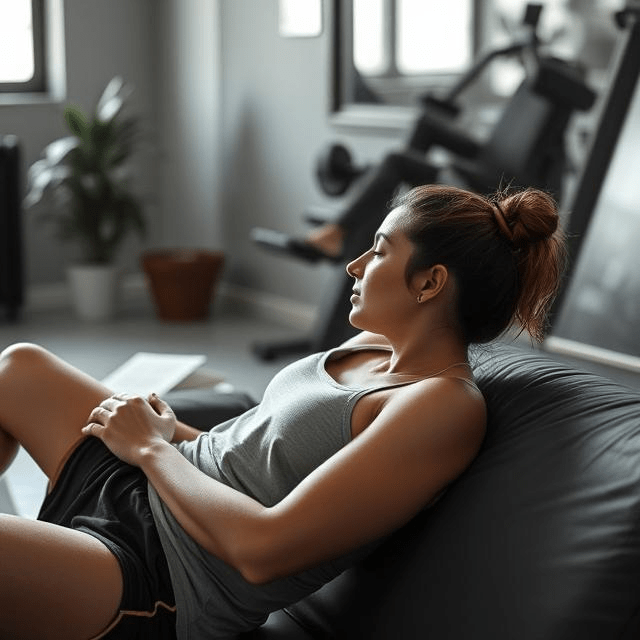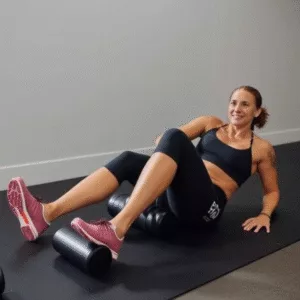
How often do you enjoy rest days from working out. Rest days are very important to your physical and mental recovery, a rest day should have a designated place in your training regime.
This post will be looking at rest days, why they are important and what we should be doing during these special times. I believe the topics covered are invaluable for anyone in sport.
Rest Days From Working Out
Why Recovery Is Key to Progress
Taking time off from working out isn’t slacking; it’s part of the plan. Rest days play a crucial role in muscle recovery and growth. When you lift weights or do any intense exercise, your muscles experience tiny tears. It’s during rest that these tears heal and become stronger, paving the way for those gains you’re aiming for. Think of rest days as an essential part of the building process.
The Science Behind Recovery and Rest Days
Scientific research supports the necessity of rest days. According to studies on exercise recovery, muscle protein synthesis, the process responsible for muscle repair and growth, is heightened, during periods of rest. Additionally, the risk of overtraining syndrome (OTS), which can lead to chronic fatigue and weakened immunity, is significantly reduced with proper recovery periods.
Experts recommend at least one to two rest days per week, depending on workout intensity, to allow muscles to rebuild and optimize performance.

The Mental Benefits of Rest Days From Working Out
Mental health on and off the field matters too. Exercise is great for endorphins and stress relief, but taking breaks can improve your mood and overall well-being. On rest days, you get a chance to refresh your mind, which can help prevent mental fatigue and keep you excited about your workout routine. It’s amazing how a day off can reignite that motivation.
Skipping rest days might seem like the right approach for progress, but it’s just setting you up for problems. Overtraining is real, and it can lead to burnout, both mentally and physically. Pushing too hard without a break can result in injuries, severe fatigue, and even setbacks that force you to take extended time away from the gym.
Ultimately, rest days are about balance and making sustainable choices for your fitness journey. By allowing your body the time it needs to heal and strengthen, you not only protect yourself from injury but also enhance your long-term performance. Embrace rest days as a strategic and necessary component of fitness, not just an optional break.
Crafting the Perfect Rest Day – Activities to Enhance Recovery
Planning a rest day sounds like an oxymoron, but it’s all about active choices that complement your workout routine. Engage in low-impact activities such as yoga or Pilates, which stretch and lengthen those hardworking muscles without stressing them further. Even a leisurely walk can do wonders, keeping you moving without the intensity.
Rest Days for Different Workout Styles
Rest days should be tailored based on your preferred type of exercise:
- Strength Training: One to two rest days per week are recommended, with active recovery like light stretching or foam rolling.
- Endurance Training: Runners and cyclists benefit from cross-training on rest days, such as swimming or yoga.
- High-Intensity Interval Training (HIIT): Due to its demanding nature, two or more rest days per week can help prevent burnout.
- Casual Workouts: If you exercise for general fitness, one rest day per week might be sufficient, depending on intensity.
Nutrition – Fuelling Recovery on Rest Days From Working Out
What you eat on rest days plays a significant role in recovery. Your body needs the right fuel for repairing muscles and storing energy for the next round of exercise. Lean proteins, complex carbs, and healthy fats can aid this process. Nutrition isn’t just about eating less on rest days; it’s about eating right.
Examples of Foods to Eat on your Rest Days From Working Out
- Protein Sources: Grilled chicken, salmon, eggs, Greek yogurt, cottage cheese, tofu, or legumes
- Healthy Carbohydrates: Quinoa, brown rice, sweet potatoes, whole-grain bread, oatmeal, and fresh fruits
- Healthy Fats: Avocados, nuts, seeds, olive oil, and fatty fish like mackerel
- Recovery-Boosting Foods: Berries, spinach, turmeric, ginger, and foods rich in omega-3s to reduce inflammation

Isotonic Drinks and Protein Shakes – Are They Necessary?
If, recovery is an issue, isotonic drinks can help replenish electrolytes lost during intense workouts, particularly if you engage in high-intensity or endurance-based training. These drinks are especially useful in hot climates or after excessive sweating.
Protein shakes can be beneficial on rest days, especially if you struggle to get enough protein through whole foods. A protein shake made with whey, casein, or plant-based protein can aid muscle repair and maintenance. However, whole foods should always be prioritized whenever possible.
Rest Isn’t Just Physical – The Role of Mindfulness and Sleep
Rest isn’t just physical; it’s a holistic affair. Incorporating mindfulness techniques, such as meditation, can enhance your rest days by lowering stress levels and promoting mental clarity. It’s also a great time to practice deep breathing exercises to help calm the nervous system. Consider it an opportunity to swipe the mental slate clean and prep for the challenges ahead.
Sleep, while it might sound too simple, is a cornerstone of effective rest. If, you’re not getting quality sleep, your muscles aren’t repairing as they should, no matter how dedicated you are to low-impact activities or solid nutrition. Make your environment sleep-friendly: dim the lights, keep the room cool, and avoid screen time before bed. Quality sleep boosts muscle recovery and sets you up for peak performance on your next workout day.
Rest Days From Working Out – Self-Care Techniques for Optimal Recovery
Self-care can play an essential role in making the most of your rest days. Consider adding these techniques to your routine:
- Foam Rolling & Massage: Helps relieve muscle tension and improve blood circulation.
- Contrast Therapy: Alternating hot and cold treatments can reduce inflammation and enhance recovery.
- Epsom Salt Baths: Soaking in magnesium-rich water can relax muscles and reduce soreness.
- Stretching & Mobility Work: Gentle stretching and mobility exercises can prevent stiffness and improve flexibility.
Personalizing Rest Days – Finding the Right Balance for Optimal Performance
Rest days aren’t one-size-fits-all. They should work for you, aligning with your workout intensity and personal fitness goals. High-intensity routines may necessitate more frequent or longer rest periods, while lighter schedules could require fewer breaks. Understanding this balance helps you tailor rest days to effectively support your fitness journey.
Listening to Your Body – When to Take Extra Rest Days From Working Out
Your body usually gives signs when it needs more rest than your routine allows. Fatigue, irritability, persistent soreness, or drops in performance can all signal a need for extra downtime. Listening to your body is crucial because ignoring these signals can lead to bigger issues that derail your progress completely.

Learning From Others – The Success of Balanced Training
Learning from others who have found the sweet spot for rest and activity can be enlightening. There are countless success stories of athletes and casual fitness enthusiasts alike who have optimized their routines by knowing when to push and when to rest. Seeing real-world examples can inspire and guide transformation in your personal approach.
The Long-Term Benefits of Prioritizing Rest Days From Working Out
Ultimately, personalized rest days not only help in maintaining balance but also ensure the sustainability of your fitness regimen. By approaching rest days with the same strategy and attention as workouts, you’re set on a path to not just achieve your goals but maintain them long-term. Rest days are not a setback—they are the foundation for sustained success.
If, you have a special routine or technique you use on recovery days, please share them below.
Ultimate Training Gear.





